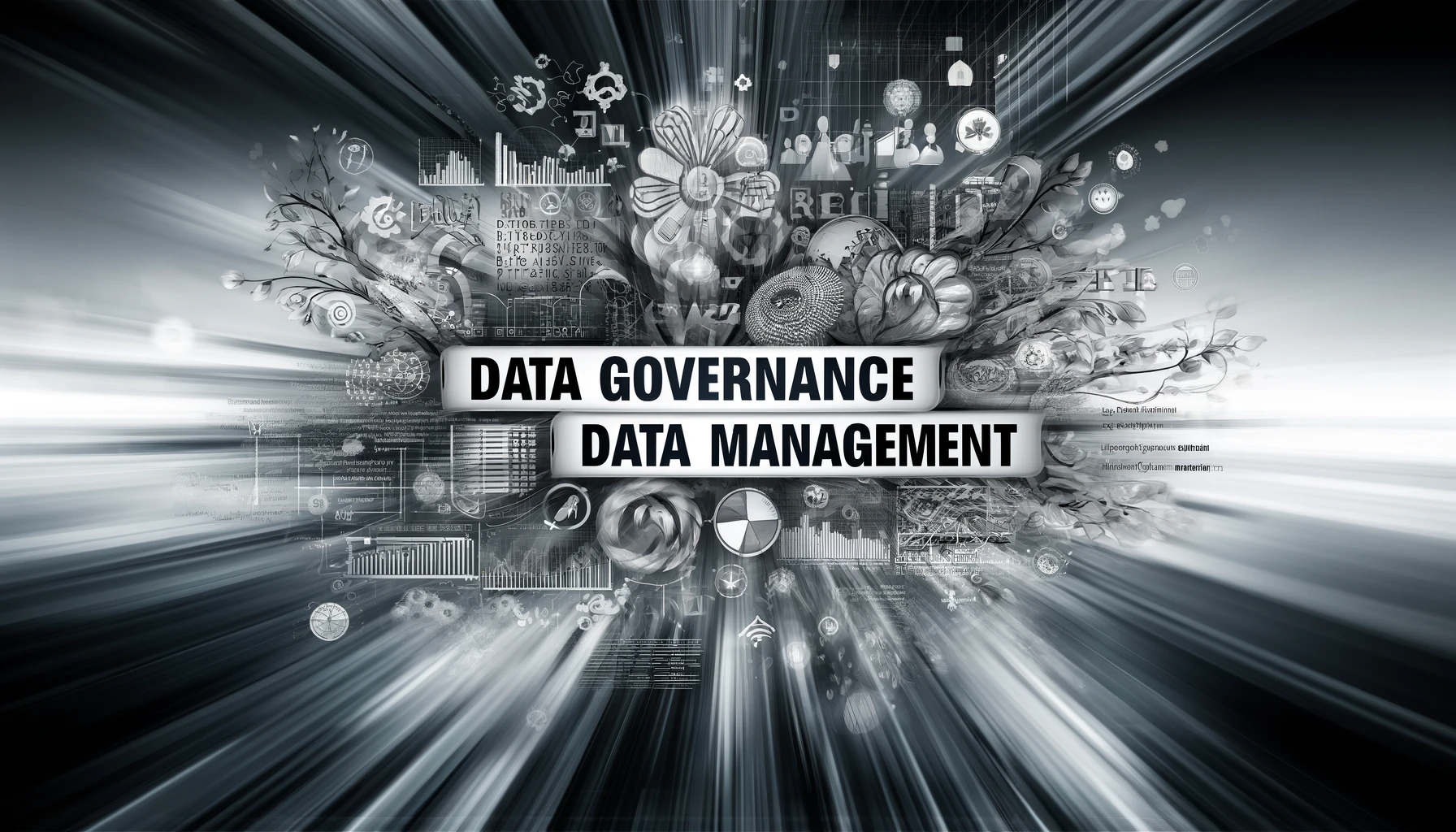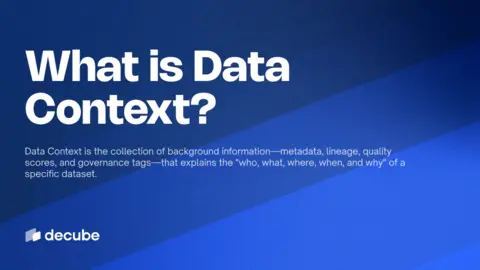Kindly fill up the following to try out our sandbox experience. We will get back to you at the earliest.
Data Governance vs. Data Management: Key Differences Explained
Explore the differences between data governance and data management to refine your data strategy and ensure organizational success.

Data Governance vs Data Management
Businesses are sitting on piles of data. However, it’s interesting to note that just 3% of that data can meet the quality standards of businesses and enterprises.
This leads us to the fact that just having data is not enough; you need to extract and analyze these data to derive meaningful insights. And that’s exactly what data governance and data management help with.
Although these are different terms, people often mistake them for one. Data governance includes the rules and procedures for accessing, using, and managing data. Data management, on the other hand, includes tools, technologies, and processes to analyze and extract information from the data for decision-making.
This article will discuss data governance vs. data management in detail. So, let's start right away.
What Is Data Governance?
According to an analyst at Forrester, data governance is a “strategic business program that determines and prioritizes the financial benefit data brings to organizations as well as mitigates the business risk of poor data practices and quality".
Simply put, data governance consists of a set of rules that can determine a company's overall strategy for using, handling, and storing data appropriately.
Using a data governance framework, companies can establish policies for
• Managing the access and usage of data
• Determining processes for storing data and how long it can be retained
• Ensuring data is stored in the right way
• Reducing any business risk associated with storing sensitive data
To further simplify it, data governance is crucial to maintain regulatory compliance, minimize risks, improve data security, and create accountability for an organization's data. It’s also important for creating standards of data quality.
Consider the case of Equifax, where a lack of robust data governance practices led to one of the most significant data breaches in history. In 2017, hackers exploited a vulnerability in Equifax's systems, compromising the personal information of over 143 million consumers. Lesson learned? Strong governance is your best defense against data disasters.
Key Components of Data Governance
The major components of data governance include the following:
• People: It goes without saying that every employee in any organization, whether in leadership or security, relies on data in one way or another. Hence, people have a crucial role to play in data governance policies.
• Data Steward: A data steward is responsible for enforcing data governance policies in a business or organization.
• Policies: Policies determine who can access and use data, how long data can be retained, and the different types of data that can be stored.
• Standards: Standards are all about data quality. Organizations need to set a specific standard that will help them ensure data quality. As a result, this enhances data accuracy and minimizes duplicate records, thereby maintaining consistency.
All these components need to work together to achieve success.
What Is Data Management?
Data management can be referred to as the technical execution of a data governance strategy. It includes the implementation of the standards and policies set in a data governance framework, that is
• Creating role-based access rules to determine who can access which data
• Implementing database rules to dispose of data according to the data governance policy
• Establishing and maintaining the data security measures needed to comply with company policy around information security
• Taking appropriate measures to minimize the risk associated with storing sensitive data
• Creating a system for master data management (MDM), which is a single view of data across the enterprise
• Generating necessary definitions of business terms and their context with business glossaries supported by a data catalog
Having a data management strategy ensures the organization's data is handled as per the company's policies for its whole lifecycle, right from when it’s created to when it will be retired.
Key Components of Data Management
The key components of data management include the following:
• People: Like in data governance, people play an essential role in data management. Organizations must ensure people are well-educated about data policies to achieve the best data management practices.
• Tools: To manage and prepare data, you need tools such as ETL software, data governance tools, or business process automation applications.
• Processes: Certain business processes must be established within an organization to enhance data quality, use and delete data as and when needed, or generate metrics on data usage.
Data Governance vs. Data Management: Key Differences at a Glance
Here's an overview of the main differences between data governance and data management.
How Is Data Governance Different from Data Management?
Data governance and data management can be understood based on four factors. Let’s have a look at these:
Processes
One significant difference between data governance and data management is in their processes. We already know that data governance is all about setting rules and policies.
Some of the processes involved in data governance are
• Establishing data quality guidelines
• Setting up data lineage to ensure traceability
• Monitoring management practices to ensure compliance
On the other hand, data management processes involve the following:
• Data integration for a unified data view
• Implementation of security controls for data protection
• Data archiving to prevent loss
Focus
The next factor in data management vs. data governance is focus. Data governance focuses on business and compliance aspects, including how data governance policies can support organizational goals to make them comply with legal and regulatory requirements.
However, data management focuses on the format and structure of data, i.e., the type of data, how it can be used, etc.
The goal of both these concepts is the same – to manage data as a valuable asset. Both concepts use procedures and guidelines to ensure data is of high quality, is easily accessible, is secured, and complies with rules and regulations.
Roles and Responsibilities
The roles and responsibilities of those involved in data management and data governance vary. Data governance includes decision-making responsibilities like determining data policies and assigning roles and responsibilities for data management. Data owners and domain business experts play this role.
On the contrary, data management is about collecting, storing, and distributing data to those in need. These tasks are generally performed by data engineers and data architects.
Tools and Technologies
Whether it is data governance or data management, both rely heavily on certain tools and technologies. But the tools and their purposes vary.
For instance, data governance requires tools for documenting data ownership, accessing policies, and integrating them with all the data assets. These tools include glossaries, dictionaries, and data contracts.
Data management tools involve data operations like processing, exploring, and transforming data.
How Can Data Governance and Data Management Work in Collaboration?
Data governance and data management must work together to help organizations maximize the use of their data.
Three major areas where data governance can work in collaboration with data management are Compliance, Access Control, and Data Cataloging.
Now, let’s understand these with the help of some examples.
Data governance and data management can be used together in a financial institution to maintain compliance. Data governance sets policies for handling credit card data that comply with the Payment Card Industry Data Security Standard (PCI DSS), while data management implements encryption techniques for storing and transmitting sensitive card information.
Coming to access control, take the example of a healthcare organization. Here, data governance defines roles like Physician, Nurse, Doctor, etc. Each of these roles has specific access to the patient records. On the other hand, data management allows these roles to view patient records, update patient statuses, and manage system configurations.
The next area is data cataloging. In a retail company, data governance is implemented to define the product's taxonomy and attributes for cataloging merchandise data. The role of data management is to extract metadata from product databases, categorize items according to the defined taxonomy, and enrich metadata with additional attributes such as pricing, inventory status, and supplier information. Thus, users can then search the catalog to find specific products and access relevant data for analysis or reporting.
To sum it up, when it comes to data governance vs. data management, data management is the execution, and data governance is the guidance that informs the execution.
Use Cases of Data Governance
Data governance has many uses, including the following:
· It helps set parameters for data quality, usage, and data security. This can further be used to measure the effectiveness of data governance practices.
· A data governance framework can be created using all the policies, standards, tools, and processes to manage and govern data. This will decide who can use data and how.
· Data governance is also responsible for defining administration roles and representatives from various departments like IT, legal, compliance, and business units.
Use Cases of Data Management
Now, let’s have a look at the use cases of data management:
· Data management is beneficial for storing data in a central location like adata lake or warehouse. This further involves organizing and indexing data for analysis and reporting.
· Data can be converted into specific formats based on businesses' requirements. Transformation focuses on ensuring data is in the relevant format for its intended use.
· A data model can be created to depict individual data elements and their relationships. This includes designing and structuring databases and data systems to align with real-world data representations and organizational requirements.
· Data management is important for data mining, machine learning, and business intelligence techniques. Furthermore, these processes can be used to extract meaningful information from data.
· Data management helps detect and correct errors like duplicate records and inconsistent data, ensuring data accuracy and usability for high-value analysis and decision-making.
Challenges with Data Governance
Now that we know the examples and use cases of data governance, let’s have a look at the potential challenges related to data governance:
· Defining clear roles and responsibilities for each person in data governance can be challenging. Furthermore, ensuring that each person in an organization has a well-defined role can be time-consuming.
· Another challenge is ensuring that the data available is in the correct format and not redundant. You need to establish processes to identify and monitor data with quality issues, which can further be resolved using tools and techniques.
· You need to provide extensive training and guidance regarding the policies and standards of data governance to everyone using the data. Failing to do so can result in errors and complications.
Challenges with Data Management
Here are the possible challenges associated with data management:
· With the vast amount of data available, it can be challenging to identify and use the right data meant for your organization.
· Converting data might take a lot of time, leading to losing the analysis.
· Continuous changes in compliance requirements can make it challenging to ensure people are using the right data set.
Data Governance and Data Management:Collaboration is the Key
So, you see how data governance and data management play a significant role in any organization's data strategy.
Once you know how to use both these concepts in collaboration, rest assured that your data assets are managed responsibly, securely, and effectively. While data governance provides guidance, data management is all about execution to manage data throughout its lifecycle.
Data governance and data management are different concepts, but their goal is the same: to use data in its best form. Therefore, it’s safe to say that you need both to improve your organization's overall efficiency.

_For%20light%20backgrounds.svg)
















